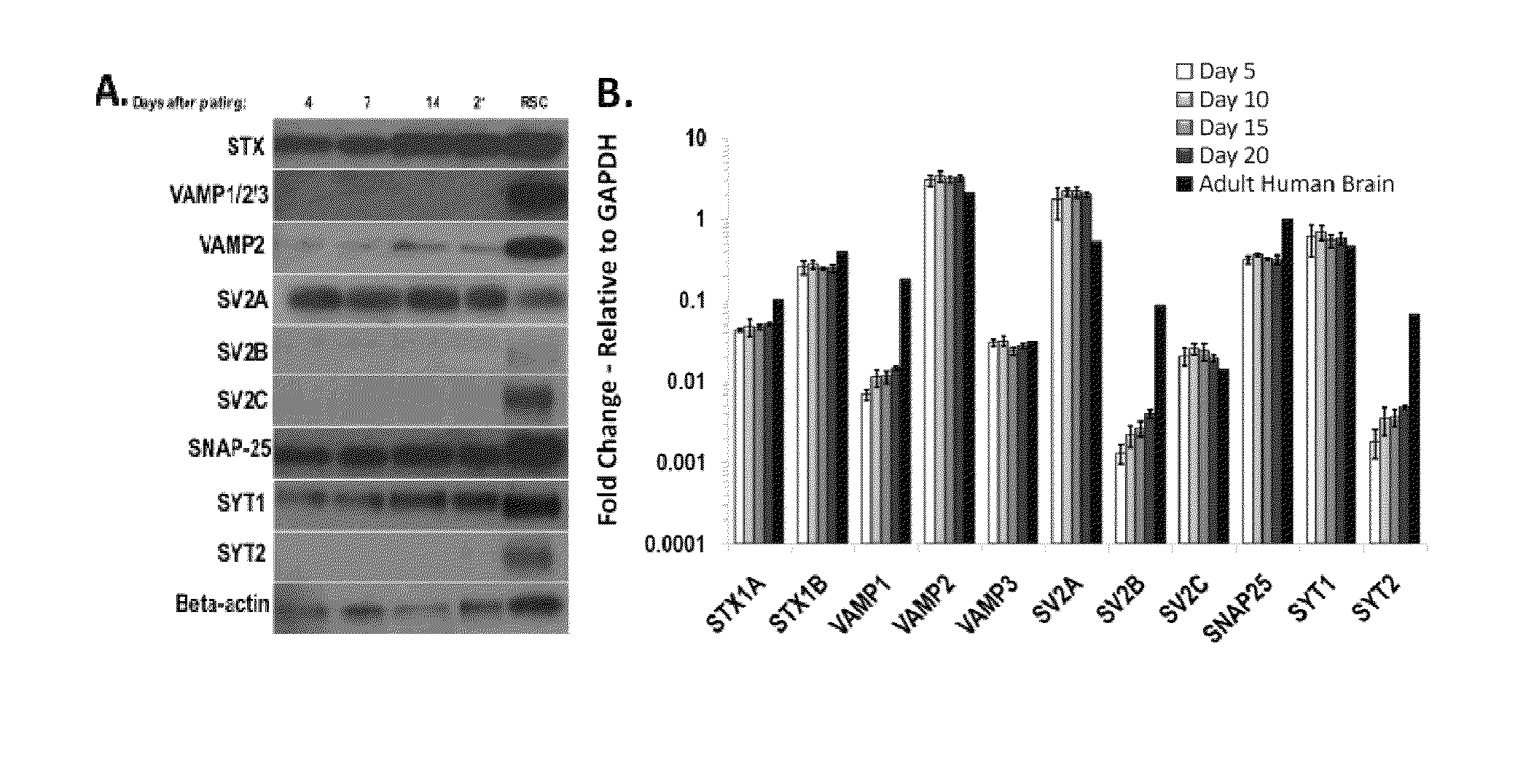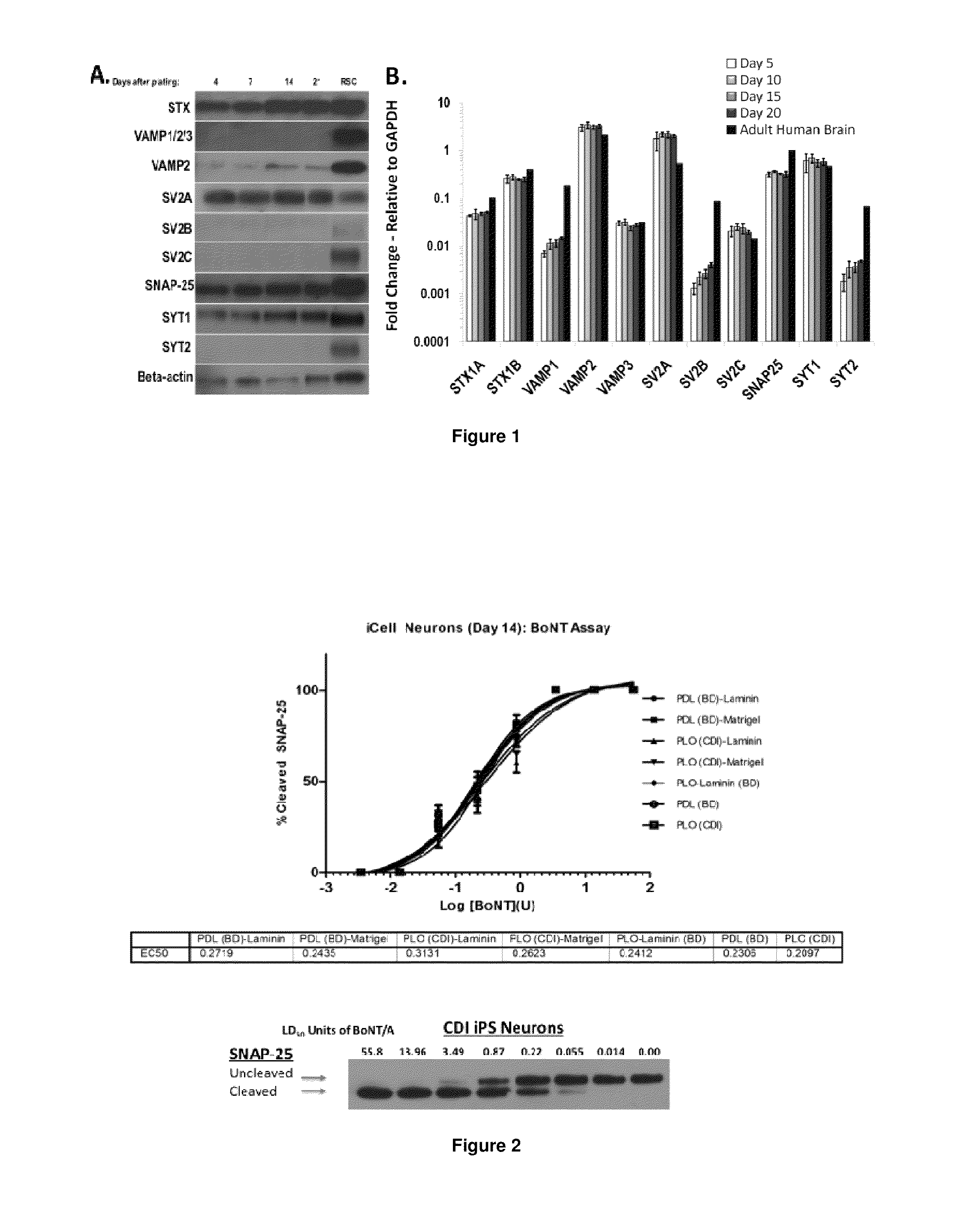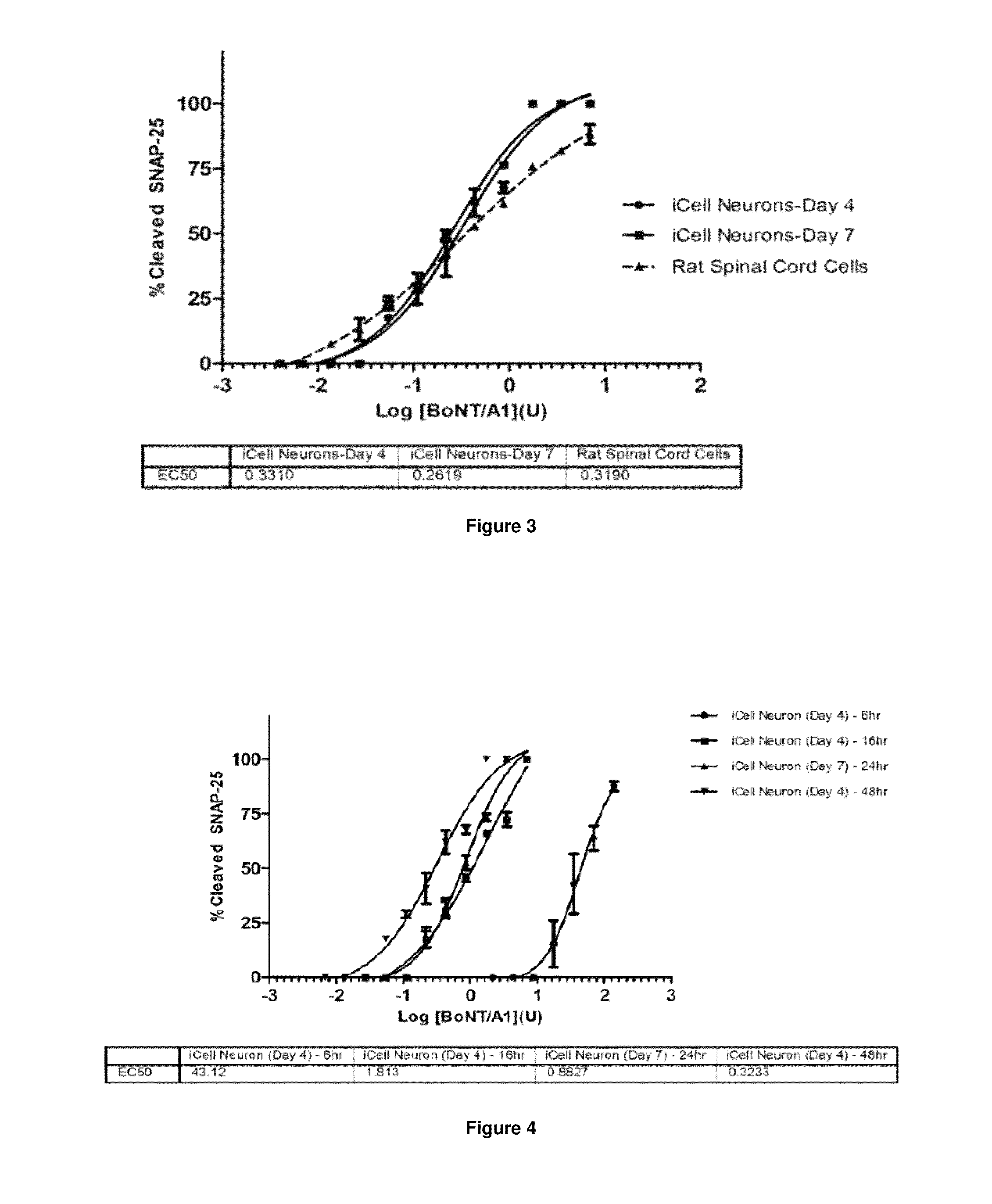Compositions and methods for toxigenicity testing
a technology of compositions and methods, applied in biochemistry apparatus and processes, instruments, blood/immune system cells, etc., can solve the problems of large error rate, large number of animals and skilled staff, and inability to be standardized between or within labs
- Summary
- Abstract
- Description
- Claims
- Application Information
AI Technical Summary
Benefits of technology
Problems solved by technology
Method used
Image
Examples
example 1
A. Methods
[0101]Neuronal cells: The human iPS derived neurons were supplied frozen by Cellular Dynamics Inc. (Madison, Wis.). Neurons were thawed according to Cellular Dynamics instructions, and live cells were counted by Trypan Blue exclusion assay. Cells were seeded at a density of 40,000 cells per well into 96-well dishes (TPP, MidSci) coated with 0.01% poly-L-ornithine (SIGMA) and 8.3 μg / cm2 matrigel (BD Biosciences) unless otherwise indicated, and incubated in neuronal medium (Neurobasal supplemented with B27 and glutamax, all from Invitrogen and supplied by CDI) at 37° C., 5% CO2 for the indicated maturation times. At 24 h after seeding, the medium was changed completely, and half of the medium was replaced every 2-3 days thereafter.
[0102]Primary rat spinal cord (RSC) cells were prepared as previously described (Pellett et al., 2007 and 2010), and seeded into matrigel-coated 96-well plates at a density of 75,000 cells per well.
[0103]Botulinum Neurotoxin:
[0104]Pure botulinum ne...
PUM
| Property | Measurement | Unit |
|---|---|---|
| pH | aaaaa | aaaaa |
| volume | aaaaa | aaaaa |
| volume | aaaaa | aaaaa |
Abstract
Description
Claims
Application Information
 Login to View More
Login to View More - R&D
- Intellectual Property
- Life Sciences
- Materials
- Tech Scout
- Unparalleled Data Quality
- Higher Quality Content
- 60% Fewer Hallucinations
Browse by: Latest US Patents, China's latest patents, Technical Efficacy Thesaurus, Application Domain, Technology Topic, Popular Technical Reports.
© 2025 PatSnap. All rights reserved.Legal|Privacy policy|Modern Slavery Act Transparency Statement|Sitemap|About US| Contact US: help@patsnap.com



